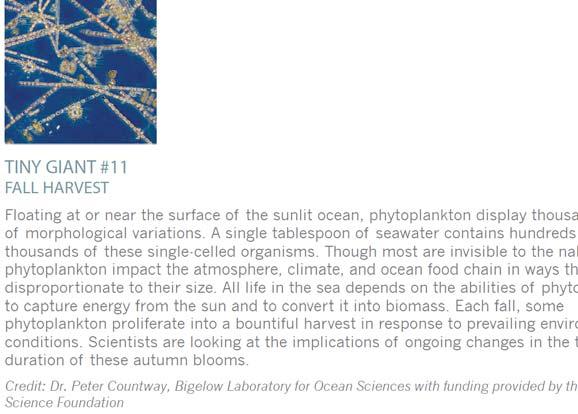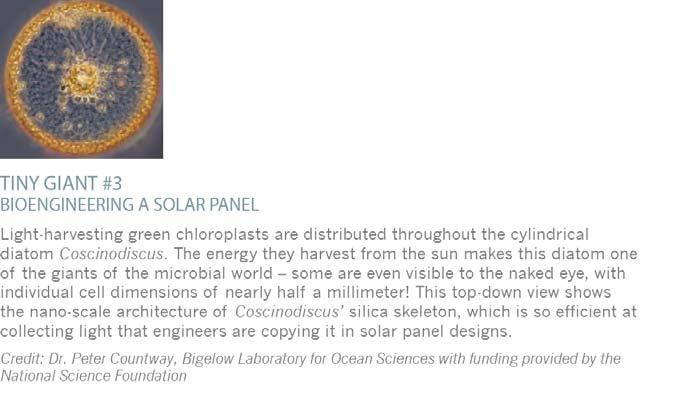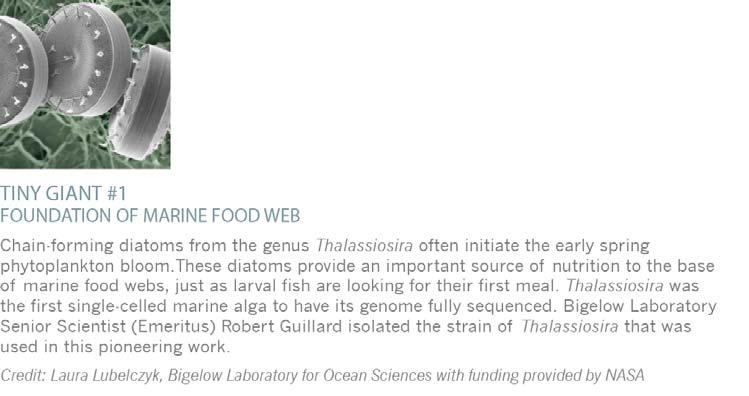
3 minute read
Making marine microbes maƩ er
from NANO News 9
by NANO
Director of CommunicaƟ ons Bigelow Laboratory for Ocean Sciences, Maine USA
The communicaƟ ons challenge was a grand one. How could we make people interested enough in marine microbes to be curious about the research being conducted here at Bigelow Laboratory for Ocean Sciences? Bigelow Laboratory is the only independent basic research insƟ tuƟ on in the world that focuses on microbial oceanography. How could we pique people’s interest? Draw them in? Make them understand that the invisible world of marine microbes is vitally important to planetary balance? And, how could we make them understand that we need to know a whole lot more about how the ocean’s Ɵ niest inhabitants are responding to ongoing climate change?
Advertisement
Our moƟ ves were not enƟ rely altruisƟ c. We also wanted to advance the reputaƟ on of the Laboratory, draw aƩ enƟ on to the world-class research going on here, and garner addiƟ onal public and private support for our research. To meet our goals, we made the invisible visible and, by so doing, set out to make “marine microbes maƩ er.” Using images taken at three diff erent scales with three diff erent microscopes (compound-light, confocal, and scanning electron), we not only made the invisible visible, but we made the visible huge! We coloured and enlarged images of diatoms, dinofl agellates, coccolithophores, and other Ɵ ny marine organisms into a photographic exhibit of 18 images that ranged in size from 40” x 40” to 60” x 50.” We called the exhibit, which we took on the road for display in public places, Tiny Giants: Marine microbes revealed on a grand scale. We capƟ oned the images with informaƟ on about the microbe itself, its role in the environment, its benefi t to society or notaƟ on if it was at risk, and any relevant research being conducted at the Lab. An accompanying brochure was created, but in the interest of “being green,” we created an app ( hƩ p://Ɵ nygiants.toursphere.com) that described the various images that was accessible on a smartphone. For those without smart phones, we off ered up a local call-in number that provided an audio tour. To date, the exhibit has been seen by thousands at venues throughout the New England region of the United States, with a full schedule plan through 2016. In September of this year, the exhibit will move to Colby College in Waterville, Maine, where professors are developing curriculum around the Tiny Giants exhibit in a variety of disciplines ranging from the arts and humaniƟ es, to the sciences, to economics. In terms of media coverage, we succeeded in opening up coverage in new media markets, including a slide show on NaƟ onal Public Radio. In short, as our exhibit literature reads, Bigelow Laboratory for Ocean Sciences is proud to share the beauty, wonder, and fascinaƟ ng stories of these amazingly intricate and adaptable organisms upon which our lives depend.








Example of images and capƟ ons












